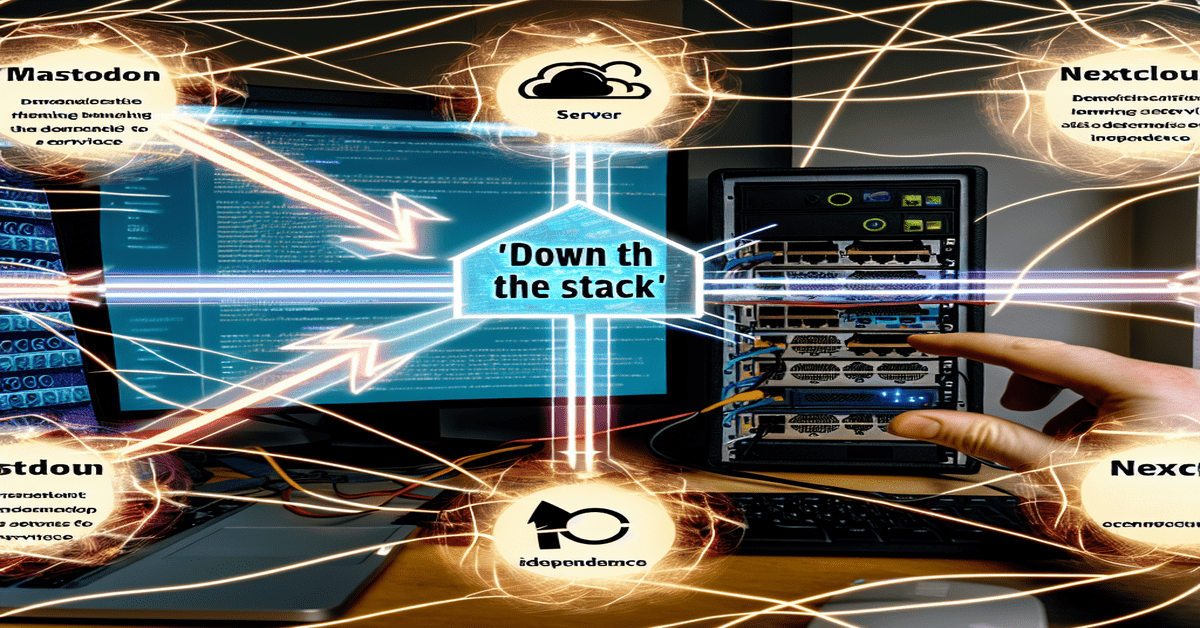The Rise of “Down the Stack”: Taking Back Control in the Age of Centralized Tech
What is “Down the Stack”?
At its core, “down the stack” refers to the idea of moving away from reliance on centralized, cloud-based services and instead building and controlling more of the technology stack locally. It’s about taking back ownership of our data, our privacy, and our digital experiences.
In the current tech ecosystem, many of us have become accustomed to the convenience and ease of use offered by centralized services like Google, Facebook, and Amazon. However, this convenience often comes at the cost of our privacy and control. When we entrust our data to these giant tech companies, we relinquish a certain level of autonomy and become subject to their terms and conditions.
The Driving Forces Behind the Shift Empowering
Several factors are fueling the movement towards “down the stack.” One of the primary drivers is the growing concern over **data privacy and security**. With frequent headlines about data breaches and misuse of personal information, people are becoming increasingly aware of the risks associated with entrusting their data to third parties.
Another factor is the desire for greater **customization and flexibility**. Centralized services often come with limitations and restrictions that can hinder innovation and creativity. By moving “down the stack,” individuals and companies can tailor their technology stack to their specific needs and preferences.
Examples of “Down the Stack” Initiatives
The trend of moving “down the stack” is already manifesting in various forms across the tech industry. Let’s take a look at some notable examples:
1. **Mastodon**: Mastodon is a decentralized social network that allows users to host their own instances. Unlike centralized platforms like Twitter, Mastodon gives users more control over their data and the rules that govern their online interactions.
2. **Matrix**: Matrix is an open-source, decentralized messaging protocol that enables secure, real-time communication. It provides an alternative to centralized messaging apps, giving users the freedom to choose their own servers and maintain control over their data.
3. **Nextcloud**: Nextcloud is a cloud storage service that allows users to host their own servers. By moving storage “down the stack,” users can ensure that their data remains under their control and is not subject to the whims of centralized providers.
4. **Riot Games**: Even big players in the gaming industry are embracing the “down the stack” approach. Riot Games, the company behind the hugely popular game League of Legends, is moving some of its services “down the stack” to reduce reliance on third-party providers and maintain greater control over the gaming experience.
Challenges and Benefits Decentralizing Tech
Moving “down the stack” is not without its challenges. Building and maintaining a decentralized technology stack requires a higher level of technical expertise and resources compared to relying on centralized services. It also introduces potential security risks, as the responsibility for securing the stack falls on the individual or organization.
However, the benefits of moving “down the stack” are significant. By regaining control over their technology stack, individuals and companies can ensure that their data remains private and secure. They can also enjoy greater flexibility and customization, tailoring their digital experiences to their specific needs and preferences.
The Future of “Down the Stack”
As concerns over data privacy and the desire for greater control continue to grow, the trend of moving “down the stack” is likely to gain momentum. We can expect to see more initiatives and projects that prioritize decentralization and user empowerment.
However, it’s important to note that moving “down the stack” is not a one-size-fits-all solution. The choice between centralized and decentralized approaches will depend on individual needs, resources, and priorities. What’s clear is that the conversation around “down the stack” is an important one, as it challenges us to rethink our relationship with technology and the power dynamics that shape our digital lives.
Conclusion
The rise of “down the stack” represents a significant shift in the tech industry, one that prioritizes user control, privacy, and customization. As individuals and companies seek to regain ownership of their digital lives, we can expect to see more initiatives and projects that embrace decentralization and challenge the dominance of centralized services.
Whether you’re an individual looking to protect your data or a company seeking greater control over your technology stack, the “down the stack” movement offers a compelling alternative to the status quo. By taking back control and building from the ground up, we can create a more empowering and sustainable digital future.
As we navigate this new landscape, it’s crucial to stay informed, engage in meaningful discussions, and make conscious choices about the technology we use. Together, we can shape a future where technology serves our needs and values, rather than the other way around.
**#DownTheStack #DecentralizedTech #UserEmpowerment** #Decentralizing Tech
- Original article and inspiration provided by Nilay Patel
- Connect with one of our AI Strategists today at Opahl Technologies


